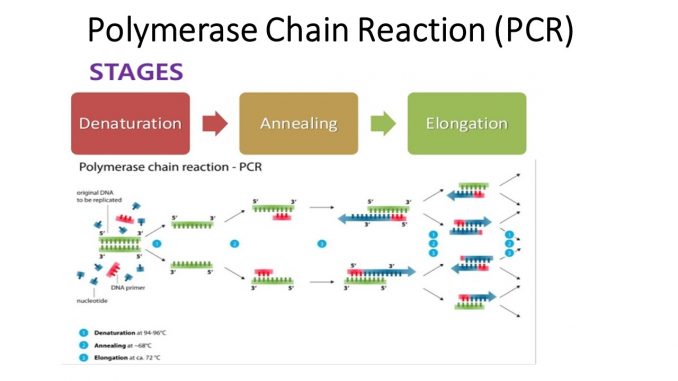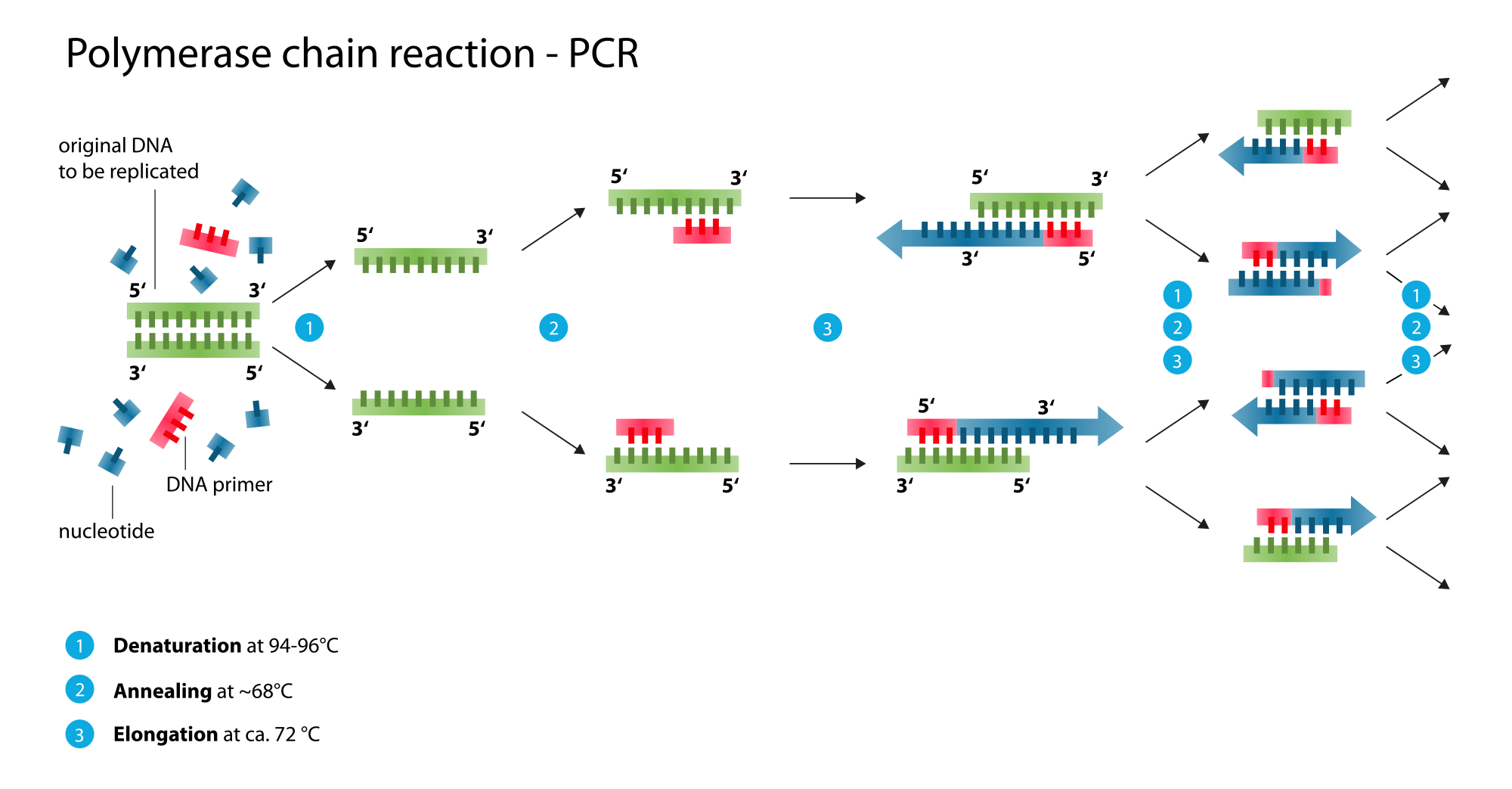
Polymerase chain reaction (PCR): Principle, procedure or steps, types and application
Principle:
- Polymerase chain reaction is method for amplifying particular segments of DNA. It is an enzymatic method and carried out invitro. PCR technique was developed by Kary mullis in 1983. PCR is very simple, inexpensive technique for characterization, analysis and synthesis of specific fragments of DNA or RNA from virtually any living organisms.
Steps or procedures:
PCR consists of three basic steps.

1. Denaturation:
- Two strand of DNA separates (melt down) to form single stranded DNA
- This step is generaly carried out at 92C-96C for 2 minutes.
2. Annealing:
- Annealing of primer to each strand is carried out at 45C-55C
3. Extension:
- DNA polymerase adds dNTPs complementary to templates strands at 3’end of primer.
- It is carried out at temperature of 72C.
- These three steps are repeated 20-30 times in an automated thermocycler that can heat and cool the reaction mixture in tube within very short time. This results in exponential accumulation of specific DNA fragments.
- The doubling of number of DNA strands corresponding to target sequences can be estimated by amplification number associated with each cycle using the formula.
- Amplification=2n, where n=no. of PCR cycle.
- PCR can amplify a desired DNA sequences of any origin hundred or millions time in a matter of hour, which is very short in comparison to recombinant DNA technology.
- PCR is especially valuable because the reaction is highly specific, easily automated and very sensitive.
- It is widely used in the fields like- clinical medicine for medical diagnosis, diagnosis of genetic diseases, forensic science; DNA finger printing, evolutional biology
Factors affecting PCR
i. Primer
- PCR reaction needs two primer, a forward and a reverse primer
- Primer are synthesized oligonucleotide usually ranging from 15-30 bases long
- Primers are designed such that at 3’end they donot have more than two bases complementary to each other as this results in PRIMER-DIMER formation.
- The G+C contents is in the range of 40-60%
- The melting temperature (Tm) of both forward and reverse primer is usually the same.
- Low concentration of primer results in poor yield while high concentration may results in non specific amplification. Hence optimal concentration of primer is needed ie 0.1-1µ
ii. Amount of Template DNA
- Optimal amount of template DNA usually in nano gram. Higher concentration inhibit or results in non specific amplification.
- Taq DNA polymerase:
- Taq DNA polymerase is 94 KD thermostable DNA polymerase isolated from Thermus aquaticus.
- Optimal temperature for activity of Taq polymerase is 72° but it can tolerate high temperature and donot affects by denaturating temperature of 94°C.
- Taq DNA polymerase have both 5’-3’ polymerase activity and 5’-3’ exonuclease activity. But it lacks 3’-5’ exonuclease activity (proof reading activity).
Types of PCR
1. Standard PCR:
- Nested PCR
- Random amplified polymorphic DNA
- Long PCR
- Restriction fragment length polymorphism (RFLP)
- Amplified fragment length polymorphism (AFLP)
- Multiplex PCR
- Single cell PCR
- Fast cycling PCR
- In situ PCR
- High fidelity PCR
- Asymmetric PCR
- Repetitive sequence based PCR
- Overlap extension PCR
- Assemble PCR
- Mini primer PCR
- Solid phase PCR
- Touch Down PCR
2. Reverse transcriptase Polymerase chain reaction (RT-PCT): for RNA
- One step RT-PCR
- Two step RT-PCR
3. Real time PCR: for DNA or RNA
- Dye binding to ds DNA
- Fluorescent probes
Application:
- Forensic science: DNA finger printing, paternity testing and criminal identification
- Diagnosis: Molecular identification of microorganisms
- Evolution study: evolutionary biology
- Fossil study: paleontology
- Gene cloning and expression
- Gene sequencing
- Vaccine production by recombinant DNA technology
- Drug discovery
- Mutation study
- Human genome project
